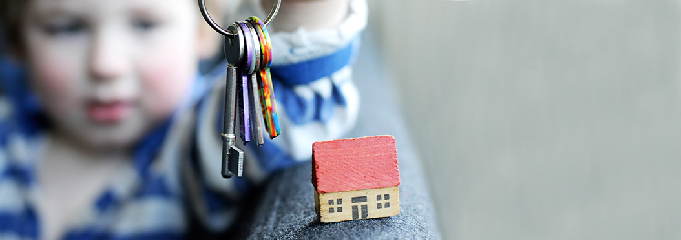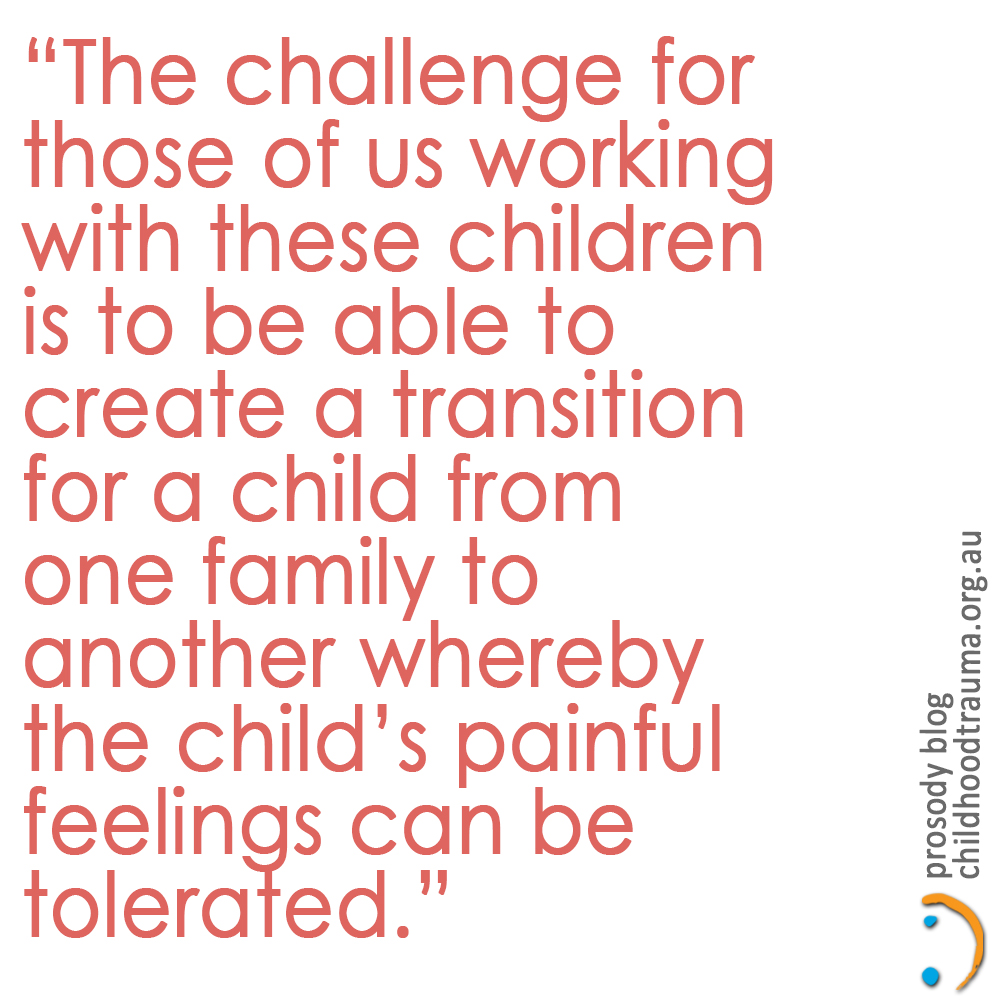
Placement transitions in Out of Home Care

This article was authored by Drew Browning, Therapeutic Specialist,
Therapeutic Care Program at the Australian Childhood Foundation.
Most children in out-of-home care experience multiple placements and this pattern of broken attachments is one of the most significant traumas for these children. How the experience of changing placements is managed becomes crucial for reducing the impact of the trauma of these separations on children. And yet, the painfulness of these changes for the child are often too much for those involved, which can result in a failure to keep the child in mind as the child is moved. This role, of carers and workers around the child, in supporting or bringing further pain in such transitions, is the topic of this blog and was also the topic of a recent paper published in Adoption and Fostering.
Children become aware of their internal state by experiencing how others react to their feelings. For children who have been exposed to abuse related trauma, this often means that they have limited understanding of their own feelings, as well as limited ability to manage uncomfortable feelings when they arise. These children need the adults in their world to react sensitively and constructively in order to learn these important life skills.
Boswell and Cudmore (2014) in Adoption and Fostering highlight the idea that the people around the child – the carers, the new family and the professionals – are more comfortable when the child appears fine, as they are not confronted by the painfulness of the situation. As a consequence, the child can have an experience where his feelings of pain, loss, resourcelessness and hopelessness are, again, felt to be unwanted by those around him and as such, there is no space for the child to integrate and make sense of those experiences.
 The challenge for those of us working with these children is to be able to create a transition for a child from one family to another whereby the child’s painful feelings can be tolerated. It is crucial that an emotional space is created that does not replicate those earlier traumatic discontinuities, but rather enables a child to have a manageable experience of loss. Such an experience can be better achieved through the development of a gradual transition process for a child; crucial to this is the development of a constructive relationship between the two families between which the child will move. This relationship can function like a bridge across which the child can emotionally move back and forth in making the transition.
The challenge for those of us working with these children is to be able to create a transition for a child from one family to another whereby the child’s painful feelings can be tolerated. It is crucial that an emotional space is created that does not replicate those earlier traumatic discontinuities, but rather enables a child to have a manageable experience of loss. Such an experience can be better achieved through the development of a gradual transition process for a child; crucial to this is the development of a constructive relationship between the two families between which the child will move. This relationship can function like a bridge across which the child can emotionally move back and forth in making the transition.
For both families, the family relinquishing the child and the family receiving the child, there will be unconscious anxieties associated with the transition process which can function to undermine the process. If the destructive forces that can emerge in the relationship between the two families can be contained, then it is likely the child will feel held in the process and the move can provide a constructive experience of loss.
For workers, it is critical that the transition is a gradual process with substantial overlap between the child’s two worlds: the world the child will be leaving and the world to which the child is going. Furthermore, the day a child moves placement needs not to be seen as the end of the transition. In fact, in terms of the child’s internal world, he may take at least another twelve months to make the emotional transition. Contact between the child and the previous family is essential over this time to help prevent the child feeling abandoned by the previous family and this sensed abandonment hindering their capacity to develop trust in the new parental figures.
As stated earlier, undertaking planned transitions for children in out-of-home care is essential to minimise further trauma and relationships disruption. If you would like to read more about gradual transitions, and the way they can be managed to hold a child emotionally then click here to download a recent paper: “Undertaking planned transitions for children in out-of-home care” Browning (2015) in Adoption and Fostering.
